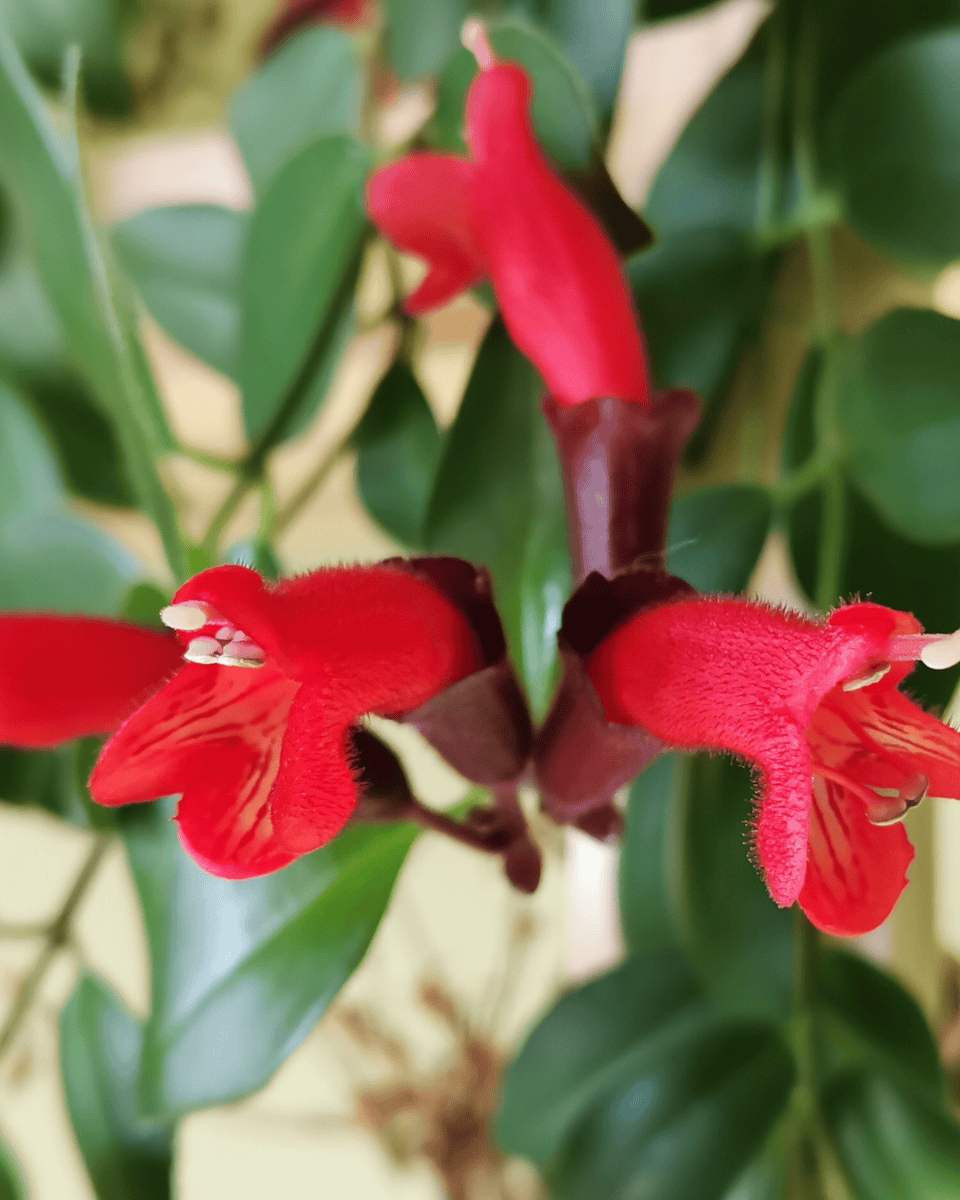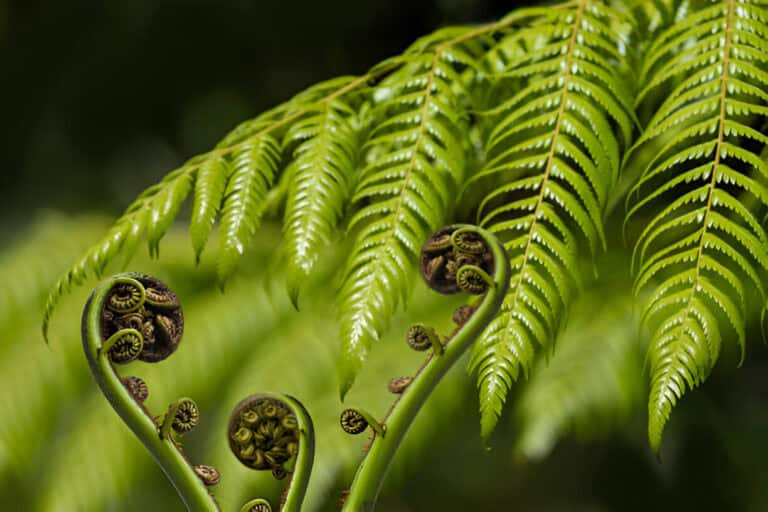Lipstick Plant (Aeschynanthus Radicans): Care and Growing Guide

I never thought I’d fall for a houseplant that looked like it was wearing lipstick, but here we are. The Lipstick Plant, or Aeschynanthus radicans, quickly became one of my favorites for how effortlessly it brightens up a room. With its trailing vines, deep green leaves, and those vivid, tubular red flowers that look just like a tube of lipstick uncapped, it’s an instant showstopper—whether hanging in my kitchen window or perched on a shelf in my office.
But here’s what really sold me: this plant isn’t just about looks. Did you know it blooms both in and out of season with the right care? And those thick, shiny leaves? They hold their color year-round, making it a standout in any space. So how do you keep it that happy?
In this guide, I’ll walk you through how to care for a lipstick plant so it thrives wherever you place it. Whether you’re new to houseplants or just want something bold and low-maintenance, you’ll learn everything you need to grow a lush, flower-filled vine that feels just as good as it looks.
At the most basic, remember the following three cardinal principles of caring for your lipstick plant:
- Watering: water your lipstick plant moderately. Ensure that the top 25% of the soil is dry before you can add more.
- Light: lipstick plant loves light but not direct sun.
- Temperature: lipstick plant loves moderate temperatures of between 70-80°F (21°-26°C) to bloom throughout the year.
Whether you watch your potted plants every day or they catch your attention once in a while, the Lipstick plant is adaptable and will adjust to your care schedule.
We have only begun to explore the intricacies of caring for your lipstick plant. The beauty of this plant is in the small details about everyday care. Now, you have your potted lipstick plant and are all excited about your new plant mate. This is where the real job of caring for the Lipstick plant begins.
Come with us as we look at an expert’s guide on how to make your potted lipstick plant a spectacle. We will also share experiences on how to deal with different scenarios like winter, flowering season, and keeping the plant impressively succulent.
Here we go!
Lipstick Plant: How to Take Care of it
The graceful nature of the lipstick plant necessitates extreme care regarding minute details. We will, therefore, look at each aspect of care at a time. But first, it’s important to know what kind of plant you’re getting before discussing how to care for the lipstick plant.
Lipstick plants are a vine-like species that grows up to 5 ft. or 1.5M in the wild. They fall into the epiphyte class that is capable of twining on other plants. Indoors, you can grow it alone in a pot or alongside a tree-like plant where it can climb.
In terms of its growth habit, you can train the lipstick plant to spread on the floor, climb on another plant, or climb on a specially prepared rough wall. If the pot is hanging, the lipstick plant will flow downwards like a fountain.
The lipstick plant suits indoor keeping because it does not require a lot of light. With regular pruning, you can create a perfect bush that blooms regularly with flowers. It is the shape and color of the flowers that have given this plant its name.
Now that you have a basic understanding of the plant, let’s move on to the specifics of caring for the lipstick plant. Some of the areas we will cover include:
- Soil
- Humidity
- Temperature
- Light
- Watering
- Pests and Diseases
- Pruning and Training
- Repotting
At the end of the article, we will look at the most frequently asked questions and concerns you are likely to encounter daily.
Watering

The lipstick plant requires a moderate amount of water. Keep the soil moist but not waterlogged. Too much water will cause the leaves to fall while the lack of water will leave the leaves shriveled and soft. Ensure that the pot drains the water naturally to protect the roots from rotting.
Humidity
Any lipstick plant requires sufficient water but will survive in ordinary humidity. It does not require misting, but you can spray the leaves to clear dust and any pests that may be on the surface.
Soil
The secret to a blossoming lipstick plant is well-drained and airy soil. Too much water will give you fungal problems, causing the leaves to wither and fall. Combine one unit of potting mix to one unit of perlite and a single unit of peat.
Light
While the plant loves indoors, dark corners will impede it from blooming and flowering. Therefore, a few hours of indirect bright light or the early morning and late evening sun would be appropriate. The direct sun causes the leaves to wither and the soil to dry. You can place the pot near a window or hallway where it can get mild sunlight a few hours a day.
Adequate light is especially important during the flowering season. The most beautiful flowers, in the largest quantity, will bloom on the sections of the plant that receive sufficient light and sunshine.
Frizzled leaves and unkempt vines are an indication that your plant is not getting adequate light and needs to be moved to a better place.
Temperature
The ideal flowering conditions for lipstick plants are plenty of moderate light, high humidity, and warm temperatures. A temperature range between 65° and 80°F (18° and 26°C) will be suitable for any variety of lipstick plant. If the leaves begin to fall, it could be because it’s too cold. The plant can also experience a sudden change in temperature.
The temperature of the soil is equally essential for lipstick plants. Luckily, the pots adapt to the temperature of the surrounding environment. However, the water must be well-drained to maintain the desired soil temperature.
Lipstick Plants Advanced Caring Guidelines
By taking extra care, you can make your lipstick plant bush an impressive sight at any time.
Here are some things you can do to improve the quality of your bush:
Fertilization
When it comes to fertilizing your Lipstick Plant, consistency and moderation are key. This tropical beauty benefits from regular feeding, especially during the growing season, but overdoing it can cause more harm than good.
For best results, apply an organic liquid fertilizer every four weeks during spring and summer. If you’re using standard houseplant fertilizer, dilute it to half strength to avoid burning the roots. Less is more with this plant.
Prefer a low-maintenance option? Slow-release fertilizers are a great alternative. These can be applied once every three months, offering a steady supply of nutrients without the fuss.
Fertilizer Type Frequency Notes
Organic Liquid Every 4 weeks Use during active growth
Houseplant (Half Strength) Every 4 weeks Dilute to protect roots
Slow-Release Pellets Every 3 months Low-effort, long-term nutrition
With proper feeding, your Lipstick Plant will reward you with lush foliage and vibrant blooms.
Pruning and Propagation
Pruning will depend on your desired type of bush. Failure to trim the vines results in thin and straggly ones. If you need a thick bush, it is recommended that you trim the vines.
The best timing for pruning is after blooming, since running in the summer or spring is the best time to not damage the plant in any way. Pruning will encourage flowering, giving you the most beautiful bush with flowers at the edges.
Vines are what help propagate the Lipstick plant. The vines slashed during pruning can be planted on a different pot and nurtured into beautiful bushes too.
Ordinary water and organic fertilizer are sufficient to encourage the vines to grow.
Pests and Diseases
Because your plant is at a shaded place, thrips, aphids, spider mites, and mealybugs will camp at the pot. But before applying any chemical pesticide, take the pot out and allow the vines to get some air. Most pests do not love light. Thus, those that hide in humid areas will disappear.
Some pests hide in the soil and may cause the entire plant to wilt. Ensure that your soil is adequately drained to avoid harboring such pests. Use the appropriate pesticides to keep most of these pests away.
If you live in a humid area or the plant is in a damp corner, you are likely to experience fungal issues. Ensure you drain the soil, reduce the humidity, and use appropriate chemicals to control the disease. However, watch out for signs of too much water or excess sunlight that might manifest as diseases.
Repotting
There are two instances when you need to repot your lipstick plant.
- When it outgrows its current pot
- If the soil becomes unhealthy
If the plant has outgrown its current pot, you need to slice it into smaller shoots for distribution to other containers. A larger pot helps maintain the shape and intensity of your bush.
Unhealthy soil can mostly be improved by replacing it with a brand new mix. Get a fresh mix of soil and manure, ensuring that it meets the desired humidity conditions. Also, correct drainage and fertilizer issues that could have made the soil unhealthy.
FAQs on Lipstick Plants (Aeschynanthus Radicans) Care
We recognize that you will encounter strange situations with your lipstick plant from time to time. Here are some of the common questions and issues you are likely to face and how to solve them.
Is the lipstick plant safe for cats?
The plant is considered healthy for both pets and humans. That is why it remains a common feature in many houses and offices.
Is lipstick plant a succulent?
Yes. The plant grows in wet areas in the wild, loves water, and has succulent leaves. The waxy leaves ensure that it falls squarely into this category.
Can lipstick plants go outside?
As long as they do not encounter direct sunlight, the plants are ready for outdoor use. The best place is a shaded area or a section that receives the sun early in the morning or late in the afternoon.
How do I care for a lipstick plant during winter?
Reduce the amount of water during winter to once or twice a month. Monitor soil moisture to determine whether your plant will require more water.
Cascading lipstick plants love hanging pots. If you give it sufficient sunshine, it will pay you back with beautiful flowers on and off-season for the entire year. Since it is a natural plant to maintain, you will have the most beautiful bush indoors.






